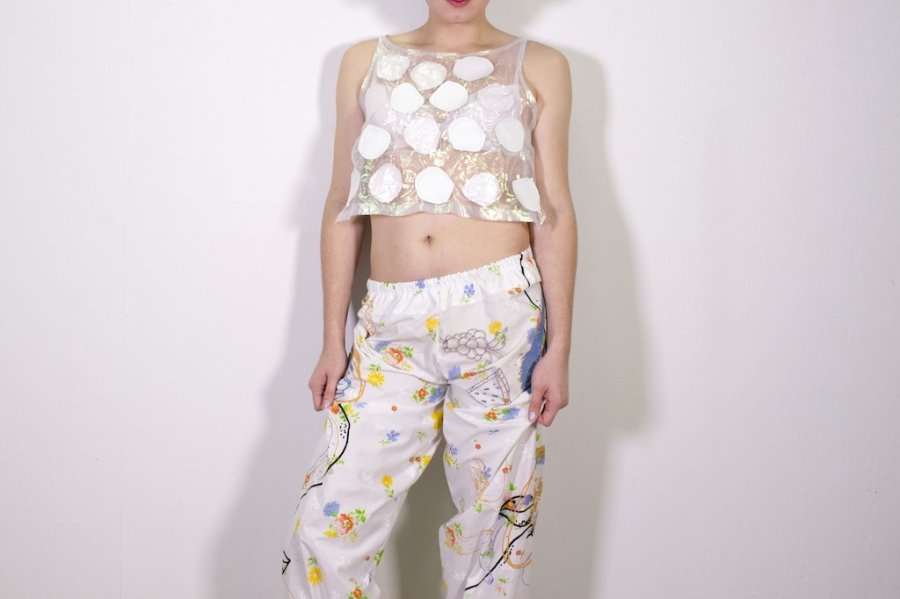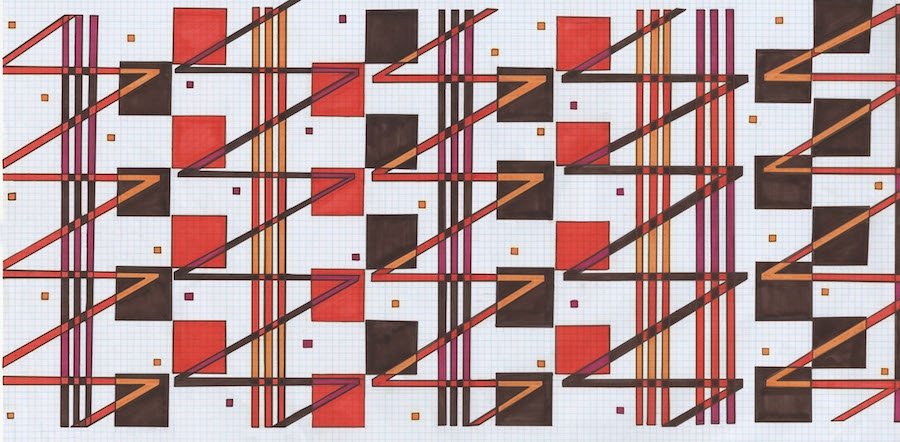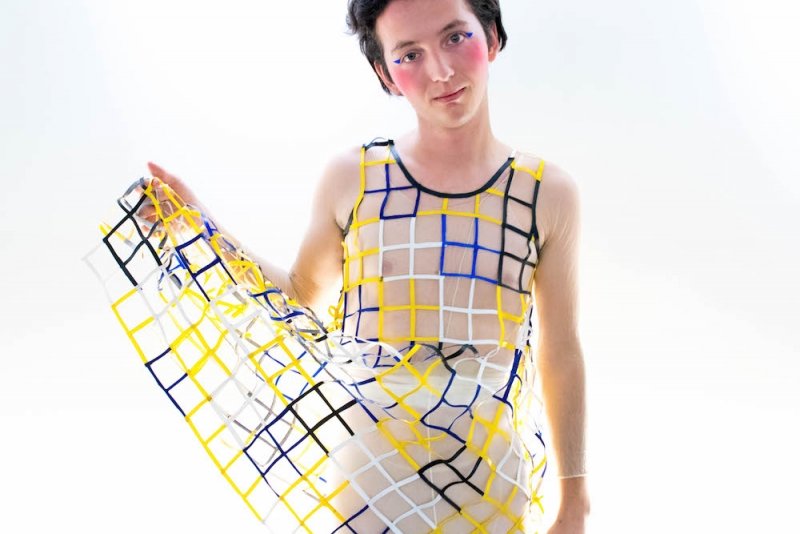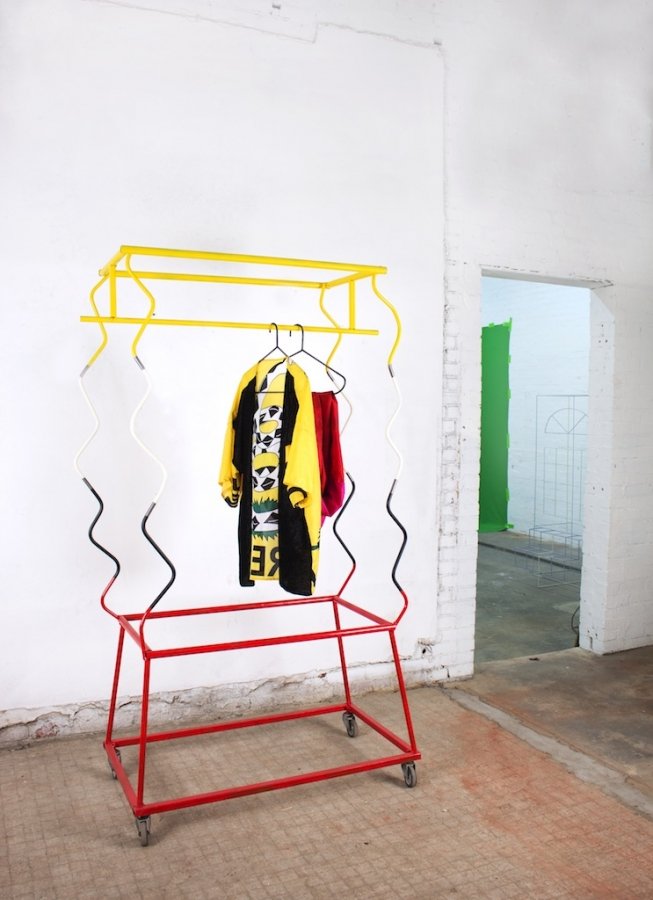From Counter-Couture to Runway Ready: A Conversation with Knoxville artist Lauren Sanders
WUSSY had a chance to sit down with Knoxville artist Lauren Sanders between her set of fall fashion shows in Knoxville and Nashville to talk about the art of power clashing, the complexity of working in male-dominated spaces, and the importance of cultivating queer communities.
We all know that living in the south presents its own unique challenges and opportunities. That is why it is so refreshing to find people like Lauren Sanders who find inspiration in open space & help us all to move forward. A self-described “arranger” Lauren has always been intrigued by how we build and interact with physical & emotional environments, which has been the basis for her past three interdisciplinary, DIY fashion shows.
Not only has Lauren successfully stitched together three cohesive, gender-neutral clothing collections since 2015, but she has supported and involved a burgeoning queer community. Lauren is an artist who does not rest while there is still work to be done and in a city with what feels like an excess of space (Lauren sees it as “room to grow”) she has taken it up as her mantle to help construct an inclusive and invigorated artist’s community.
If you want to see Lauren Sander’s work in person Free Tangerine ss18 will be presented with the help of Seed Space at Track One in Nashville on December 2 from 7-10pm.
And if you can’t make it, then at you can at the very least live vicariously below!
---
What is the common thread (forgive the pun) between your most recent project, Free Tangerine, and your previous two, Free Vaseline and Free Gasoline?
Free Gasoline was an art collective started by Ian Cato, Nathan Sulfaro, and myself. We were making work in the spirit of DIY culture, listening to a lot of Death Grips and ingesting TAZ, Hakim Bey’s book on poetic terrorism. Free Vaseline was the next installment made by Nathan Sulfaro and myself. We were definitely laughing at our own jokes, or mixing our own Kool-Aid – we felt invincible working together. I barely knew how to sew at that time. It was anti-establishment couture.
Free Tangerine was still made in the same spirit of resisting categorization, but now I have two more years of sewing experience under my belt. It’s much more aesthetically coherent. I’m using fabrics that I designed and printed at the Fabric Workshop and Museum in 2016 in conjunction with found fabric from thrift stores. Eric Cagley’s wall-sized paintings and my metal sculptures allow the models to become more direct, performative illustrations of pattern and structure.
FREE VASELINE (PHOTO COURTESY OF LAUREN SANDERS)
You have a background as a painter, you’ve apprenticed at the Fabric Workshop & Museum in Philadelphia, you just presented your third fashion collection, and you currently work in a metal shop. How do all of these skill sets play together when you are designing? What is the glue, so to speak, that keeps all of these approaches in harmony?
I’ve always been an arranger. Growing up, I would spend all day making rooms for my dolls out of objects from around the house: kitchen tools, my brother’s toys, and living room trinkets. I never actually played with the dolls. I just wanted to make a cool house for them. I see my practice now as the same activity of arrangement. I’m using metal work to build an environment specifically for the clothes I make.
I also rely heavily on drawing. All the metal work and printed patterns from the show came from drawings of rooms I made in my sketchbook. It helps to start thinking on a small scale about how one shape looks next to another.
SKETCH BY LAUREN SANDERS
SKETCH BY LAUREN SANDERS
Throughout Free Tangerine you display an array of strong patterns and bold color often paired as a power clash. What was the intention here and what process do you employ to keep your “clashing” in check?
All of the Free shows have embraced a mash-up of different mediums, blurring the lines of categorization. It has only made sense to continue that power clash in the outfits the models wear. In building a collection, I don’t let myself think about pairing pieces until everything is made. My favorite moment is always laying out all the tops and bottoms I have and starting to build outfits. I use each fabric in at least two garments, which allows for a sense of cohesion in the collection of otherwise mismatched outfits.
FREE TANGERINE ((PHOTOS BY ZARA SAPONJA))
FREE TANGERINE ((PHOTOS BY ZARA SAPONJA))
What does your process look like when considering who to cast to walk in your shows? You haven’t used “professional models” yet. How do you feel that affects the aesthetic of the show?
Nathan and I started making clothes as total outsiders to the fashion community. We never considered having anyone but our friends model for us. All of the shows have been produced in and made for Knoxville. Making clothes has been an excuse to bring my community together to share a new cultural experience.
Since your first show, you have been intentional about casting queer folks, trans folks and people of color to walk in your shows. What does that lend to your collections and how does it impact the people who come to see your shows?
I’m excited that fashion is moving in a more androgynous direction. When I make a drawing or a sculpture, it isn’t doesn’t have a gender or race. I don’t think clothing needs to be any different. Whoever is wearing it will carry it in a way that is specific to their own identity. I let models accessorize their outfits however they want. I think they should make it their own.
Knoxville has been such an inclusive space for me as a maker because of the queer community. Casting has just been a reflection of that. These shows really couldn’t have been born out of any other city. People have been so ready to own whatever look I give them in their own way. Free Tangerine is an ensemble of my support system.
FREE TANGERINE (PHOTOS BY ZARA SAPONJA)
Has growing up in the South influenced your vision, approach, or goals for the future?
There’s very little fashion culture in this region of the South, but there is a lot of potential for growth. Knoxville being a smaller area with so many makers means it’s very feasible to bring about change. Studios are cheap here and there are a lot of artists willing to help each other succeed.
For the near future, I’m content investing in my community here. I do metal fabrication for a living, which gives me access to tools and allows me to improve my skill set every day. Eventually, I would like to take what I have learned here to a larger community.
Metal fabrication is a traditionally male-dominated field. What has your experience been learning the skill and do you have any advice for other women who are in a similarly skewed field?
Both shop technicians during my time working in UT’s metal shop were women: Erin Tucker and Devin Balara. I was lucky to have my start under their influence. Learning from women granted me the confidence to work in an all-male environment.
I still have encounters with men doubting my skill set, or asserting that I’m good at what I do “for a woman.” I have gone to buy steel and tried to make myself look more like a man in order to not be treated any differently. But the reality is that my abilities and my gender are unrelated. Welding requires delicacy and moxie, which are not exclusively masculine or feminine traits. To other women working in male-dominant fields: you are a part of progress. Do it for other women. Our skills, not our gender, should command respect.
FREE TANGERINE (PHOTO COURTESY OF LAUREN SANDERS)
FREE TANGERINE (PHOTO COURTESY OF LAUREN SANDERS)
So, you have an upcoming show in Nashville? Will you tell us a little bit about that— how it might be different from the Knoxville iteration and how you have been able to juggle the roles of designer, producer, gallery assistant, and model wrangler?
All of these shows have required a tremendous amount of coordinating, list making, and support from friends. I’ve had welds on sculptures break hours before an event, drill batteries die during a last-minute install, and models drop out shortly before they are due to walk. Friends have always been there to save me in those moments. I’ve been lucky. It seems impossible to pull it all together, but it always works out. That’s just part of the fun.
My show in Nashville is going to be a little different. I won’t be doing fittings for any of the models before the event. I’m still organizing transportation of our work, sound, and coordinating with potential models. I’m from there, so I still have a strong ensemble of friends willing to help. I’m bringing a squad from Knoxville with me, too. What could go wrong?
-----video & backstage photographer: Zara Saponja (IG: @i_am_nomuggle)
-----make-up artist: Nina Angelo (IG: @dustylittlbutterfly)
Archive
- February 2025
- November 2024
- October 2024
- September 2024
- August 2024
- July 2024
- June 2024
- May 2024
- April 2024
- October 2023
- July 2023
- June 2023
- May 2023
- April 2023
- March 2023
- February 2023
- June 2022
- April 2022
- March 2022
- January 2022
- December 2021
- October 2021
- September 2021
- August 2021
- July 2021
- June 2021
- May 2021
- April 2021
- March 2021
- February 2021
- January 2021
- December 2020
- October 2020
- September 2020
- August 2020
- July 2020
- June 2020
- May 2020
- April 2020
- March 2020
- February 2020
- January 2020
- December 2019
- November 2019
- October 2019
- September 2019
- August 2019
- July 2019
- June 2019
- May 2019
- April 2019
- March 2019
- February 2019
- January 2019
- December 2018
- November 2018
- October 2018
- September 2018
- August 2018
- July 2018
- June 2018
- May 2018
- April 2018
- March 2018
- February 2018
- January 2018
- December 2017
- November 2017
- October 2017
- September 2017
- August 2017
- July 2017
- June 2017
- May 2017
- April 2017
- March 2017
- February 2017
- January 2017
- December 2015
- November 2015
- October 2015
- September 2015
- August 2015
- July 2015
- June 2015
- May 2015
- April 2015


















